The Moon Festival is a traditional festival celebrated throughout Southeast Asia. The second most important major event after the New Year with a long history, this festival corresponds with the Bon Om Touk water festival in Cambodia.
Table of Contents
The dry season begins
Bon Om Touk marks several events at once. One is the beginning of the dry season. In fact, there are only two seasons in Cambodia – dry season and rainy season. While the dry season from November to April is when most tourists are in the country, the rainy season is characterised by rain, flooding, but also more time spent with families.
Once the seeds have been sown and the rice plants planted, people wait for nature to do its work. A special natural spectacle is the annual reversal of the flow direction of the Tonle Sap River!
With Bon Om Touk, the direction of flow of the Tonle Sap changes
The waters of the Tonle Sap River, which joins the Mekong in Phnom Penh and flows on through Vietnam, the Mekong Delta to the South China Sea, are fed by the Tonle Sap Lake (បឹងទន្លេសាប) – the largest and one of the most fish-rich freshwater lakes in Southeast Asia. Due to the seasonal monsoon rains and melt water from the Himalayas, the Mekong River always carries more water – up to four times more than usual. This water pushes into the Tonle Sap River and reverses the natural flow direction of the river – water flows towards the lake and the period of flooding begins.
Thus, the Tonle Sap River forms the inflow, but also the outflow of water for the lake during the changing seasons.
It is in November that the water gradually flows out of the Tonle Sap again and the natural flow direction away from the lake is the beginning of the peak season for fishing. Gradually, the flood waters recede.
This natural spectacle is the occasion for Bon Om Touk – the water festival. Usually at the end of October/beginning of November, it attracts many thousands of visitors to the metropolis of Phnom Penh every year.
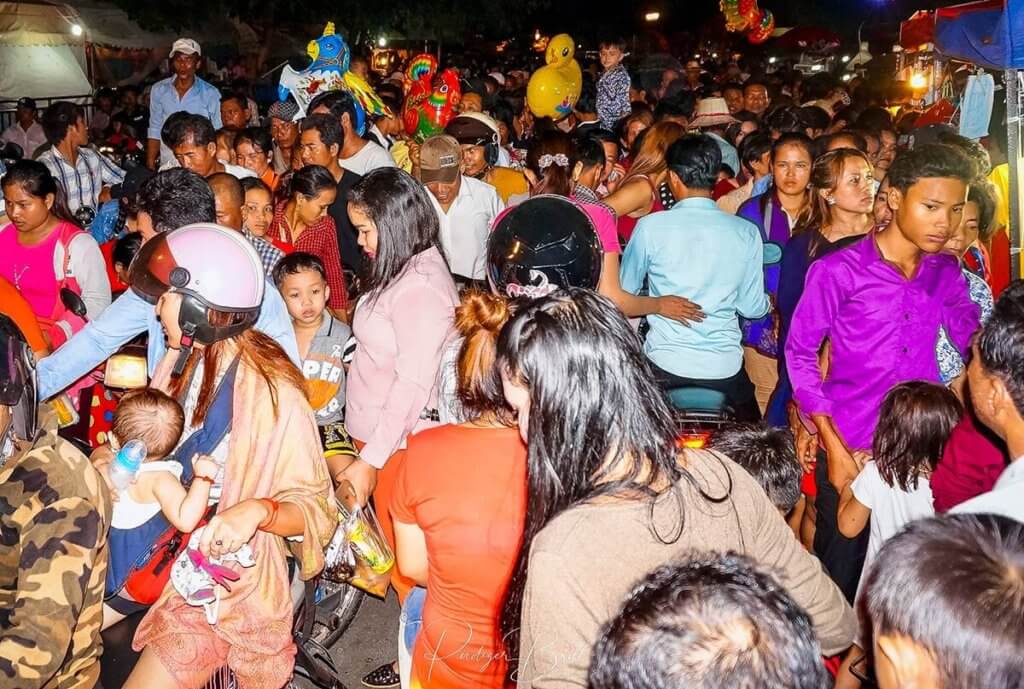
In the midst of a crowd, I was on my way to the night market. The crowds are unbelievable and a special experience. Especially here, in the anonymous masses, you experience the friendliness and consideration of the Cambodians! Everywhere you meet a winning smile, a “Suesday” (Hello). And although it can still be 30 degrees on such evenings, you are stuck in the middle of the crowd – leg to motorbike, so to speak – you take it easy.
Recommendation: On such trips through the city, be sure to leave everything valuable in the hotel! Don’t wear valuable jewellery, 20 dollars in your pocket is enough, no credit cards.
Pickpockets like to take advantage of this crowd and specifically look for tourists. Mobile phones are also very popular!
Parties, rowing, street food & more
There are three days of celebrations. On the first day, the boat races begin. Similar to the dragon boats we know, but much bigger with up to 70 rowers, the teams compete for victory.
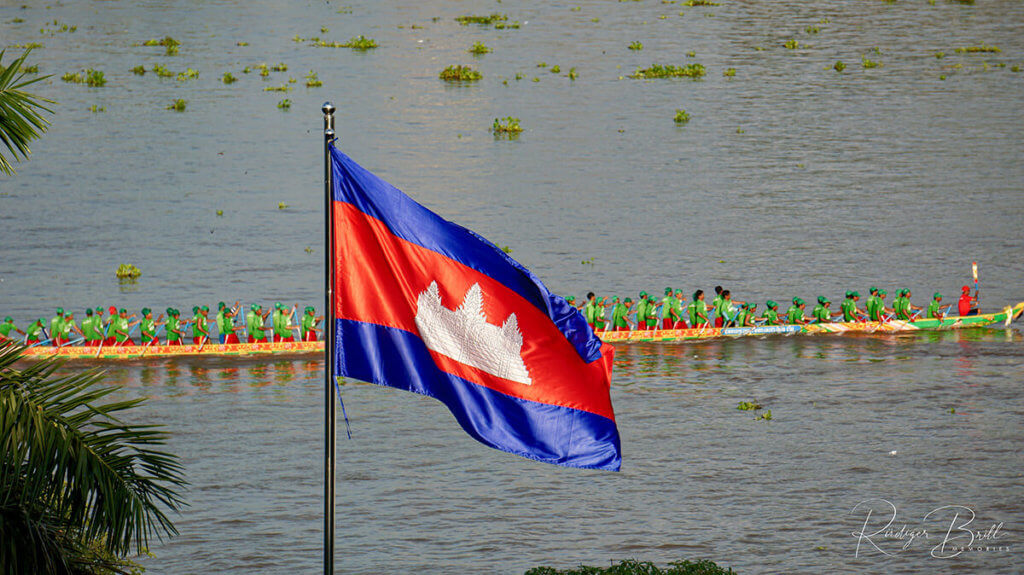
In the evening, the Bandet Bratib stroll upstream downstream along the banks of the Tonle Sap River. Large ships, some with huge superstructures, equipped with many thousands of LED bulbs, give picturesque and colourful messages. Every public office, every ministry is the godfather of such a boat.
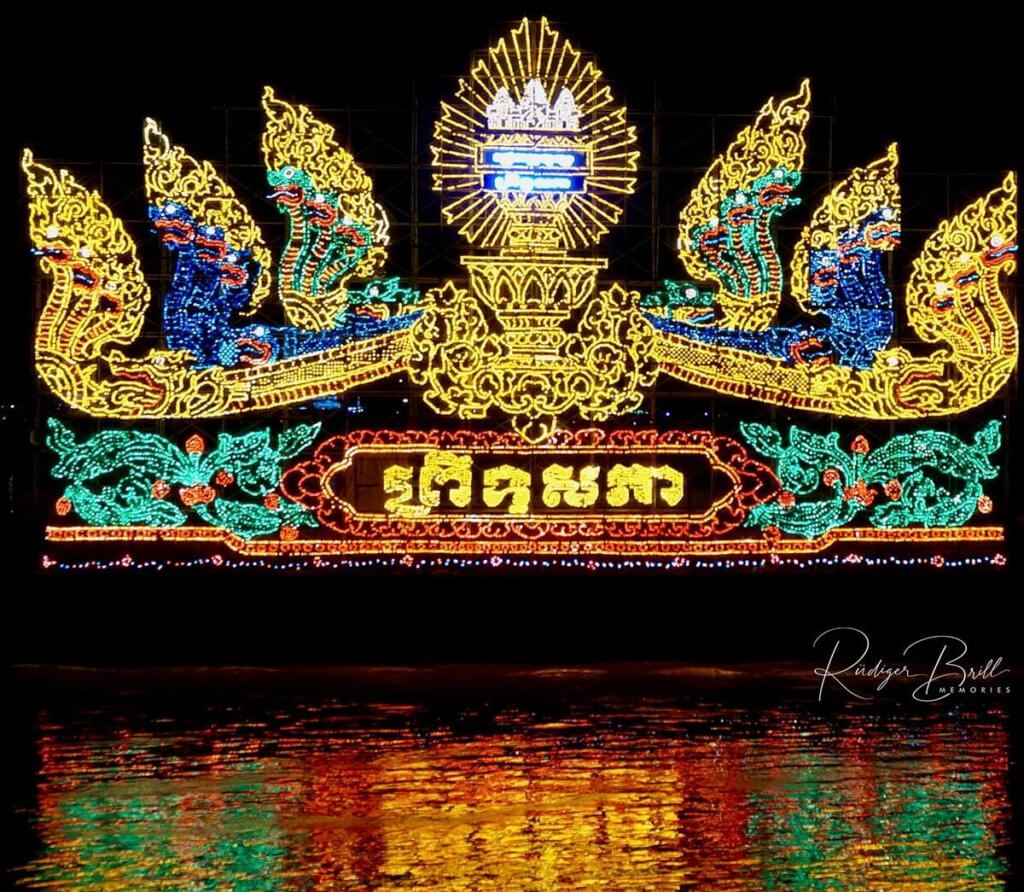
They are symbols and petitions for peace to the Goddess Ganga. Although the name comes from the river of the same name in India (there is no river named Ganga in Cambodia), Ganga is seen as the benefactress of all those who depend on the river. The river provides fish, a livelihood for the Khmer people. Water means life in the form of rice. Without water from the rivers, no life is imaginable.
Unlike in Thailand, for example – where candle-powered paper lanterns rise into the sky, offering an incomparable spectacle in their thousands, while small homemade boats, lit with candles, are launched on the river – the Cambodian Bandet Bratib is more akin to India’s Ganga Puja, a festival celebrated every year to pay homage to the goddess Ganga. The illuminated vessels as a sign of Cambodians’ gratitude for the source of water is extremely important in daily religious beliefs. A country where it is dust-dry and hot for half a year, water means food, life!
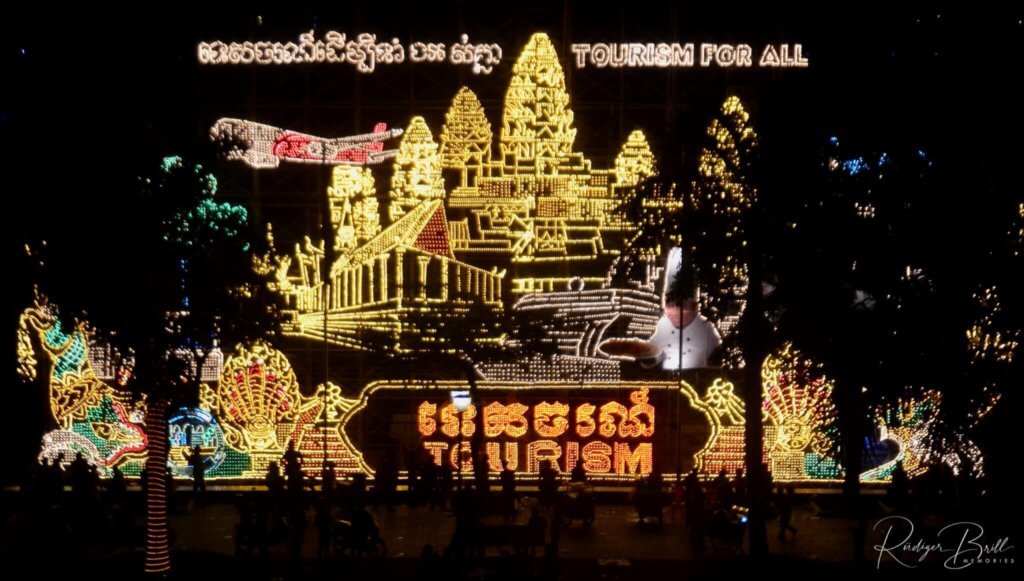
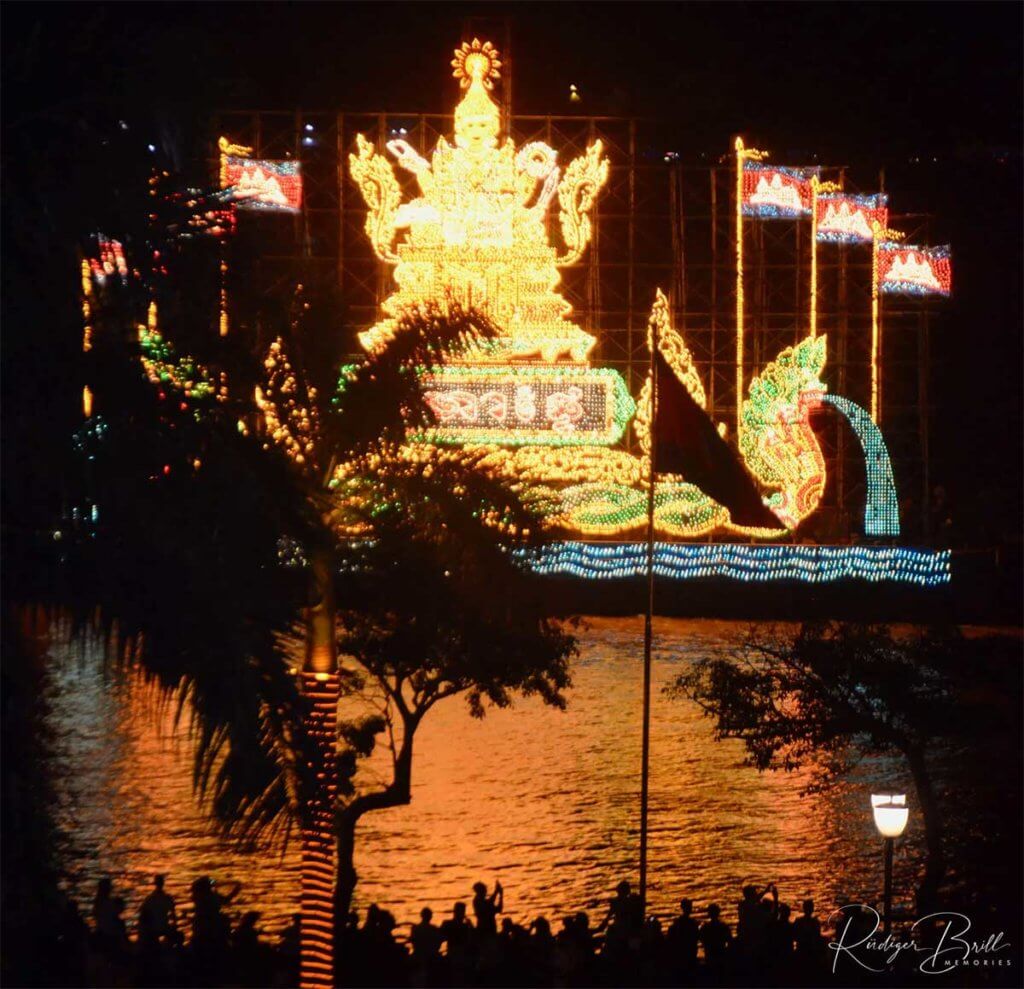
Without the darkness of night and the illuminated superstructures, the boats look less festive but still impressive.
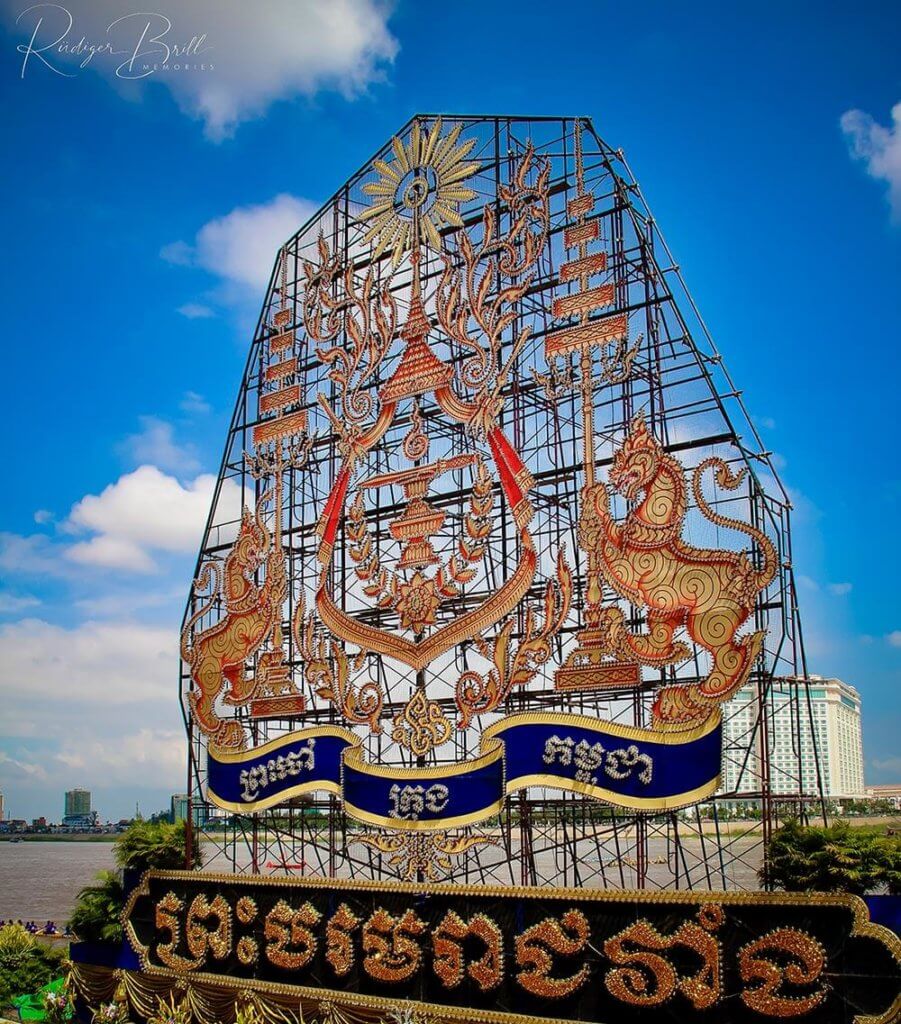
Modern LED technology makes such splendour possible. In earlier times, these ships were far less impressive.
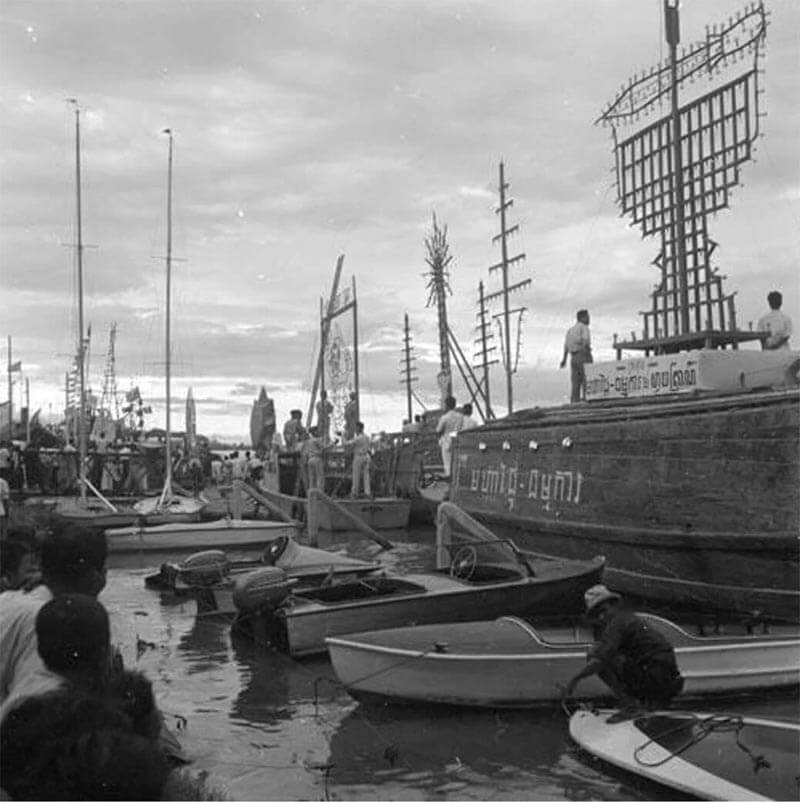
Preah Mae Kongkea
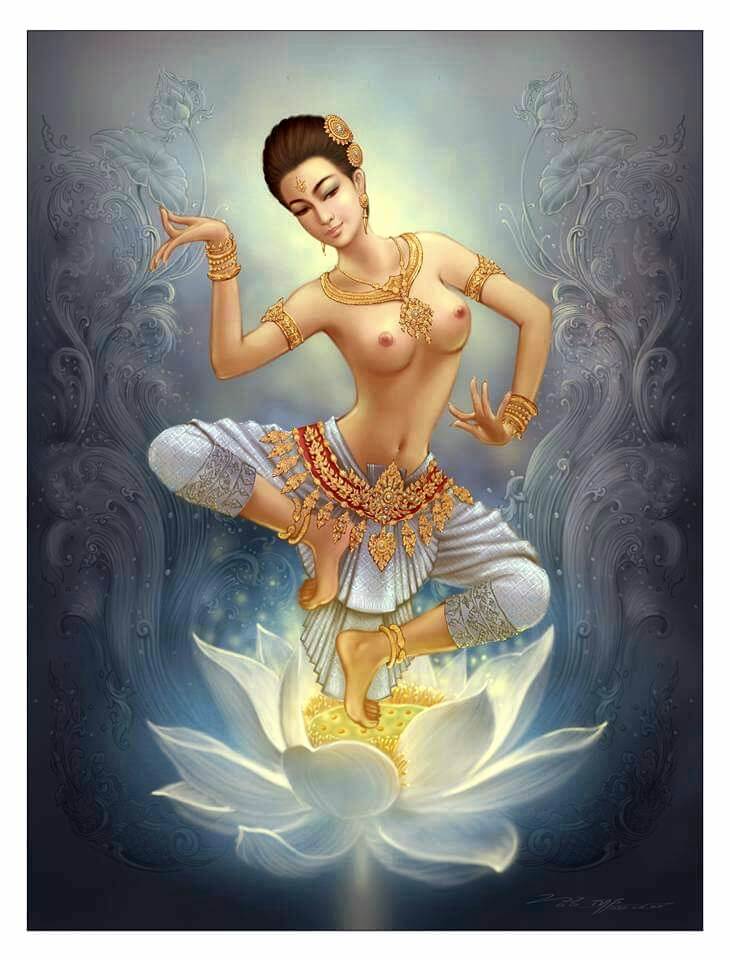
Even though the water festival is not a religious festival – Preah Mae Kongkea, the patron goddess of water, is still highly revered by Cambodians today and is directly related to the Bon Om Touk festival celebrations.
Image Source: Wikimedia
Each day comes to an end with a large and, even by European standards, really big fireworks display lasting about 30 minutes. Ignited over the spot where the Tonle Sap River and the Mekong River meet, the Sokha Hotel provides a magnificent backdrop for this spectacle.
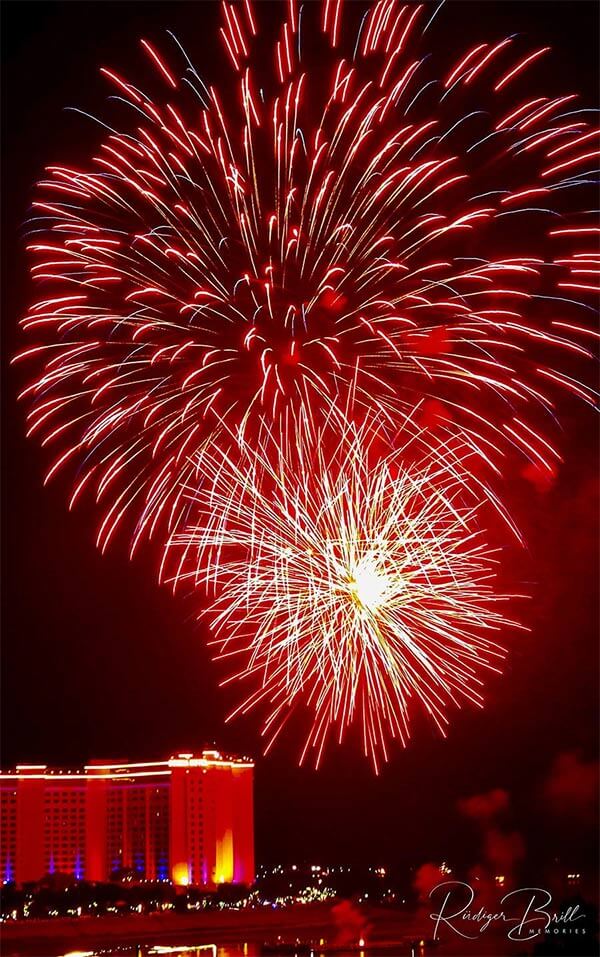
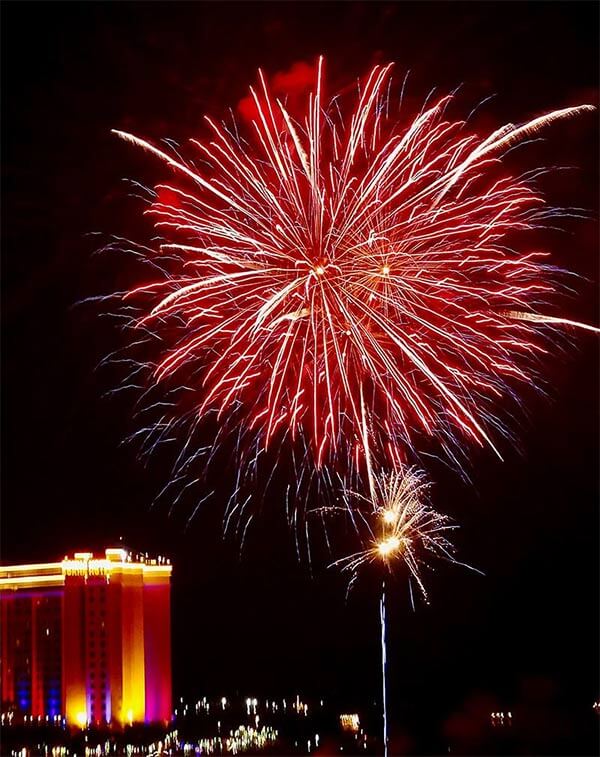
Needless to say, no Cambodian festival is complete without Streetfoot! It is impossible to imagine Cambodia’s streets without the delicacies of Khmer cuisine, especially on such occasions.
Streetfood everywhere
At the night market not far from the roundabout of Wat Phnom, there are very large stalls with all kinds of delicacies. Just take a basket, fill it up, hand it in and everything is freshly prepared and brought to the table – of course you sit there stylishly on plastic stools :-)
An ice-cold beer to go with it (with canned or bottled beer, you are always sure to get what you ordered).
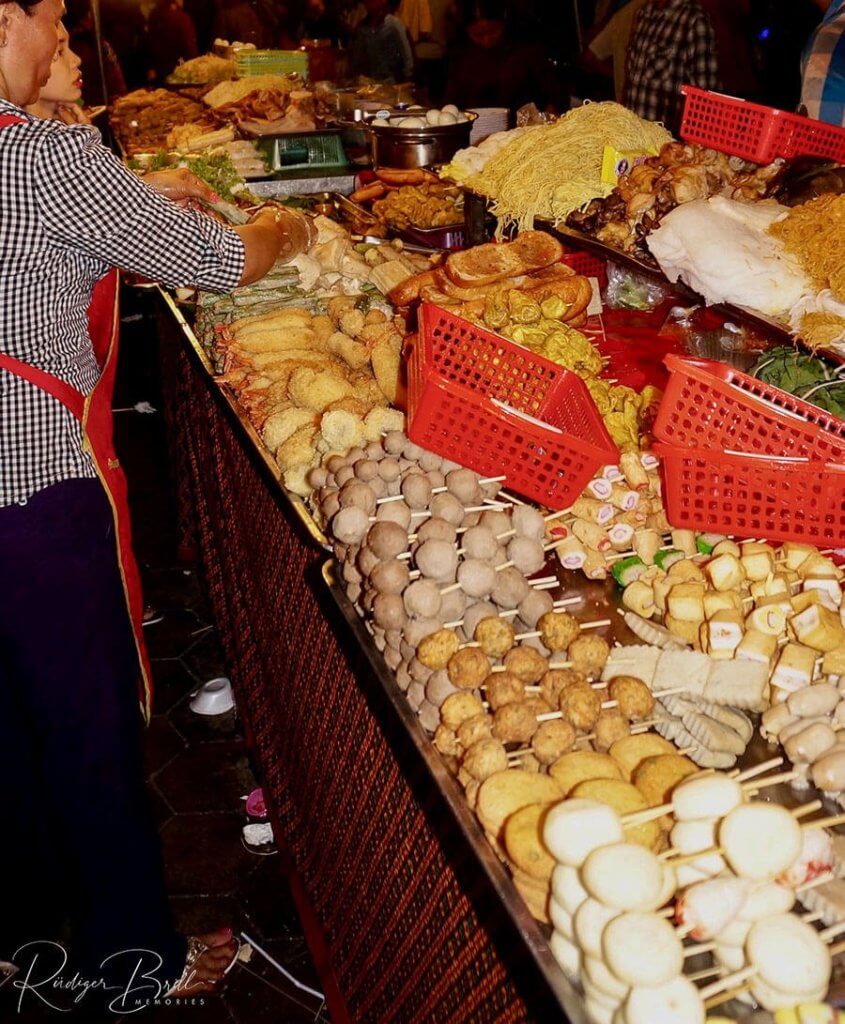
TIP: If you don’t like street food, take a look around the night market, enjoy the colourful hustle and bustle and then enjoy a great Cambodian restaurant. TITANIC, located directly on the Tonle Sap River on the other side of the street.
Popular: mussels with salt or chilli
Another popular snack is offered by the many travelling mussel vendors. Mussels with salt or chilli quickly make their way into many Cambodian mouths. In those of the tourists rather rarely, as I could observe.
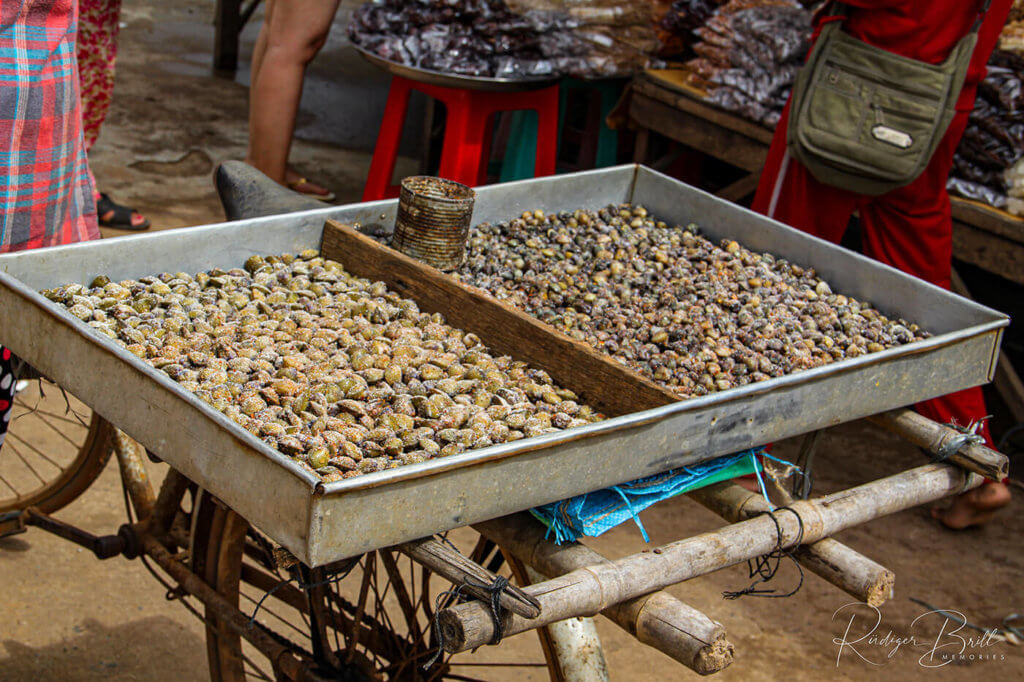
Kralan – an absolute culinary delight!
My favourite snack not only at festivals like Bon Om Touk – Kralan! Sticky rice with coconut and small beans, cooked in bamboo tubes on an open fire.
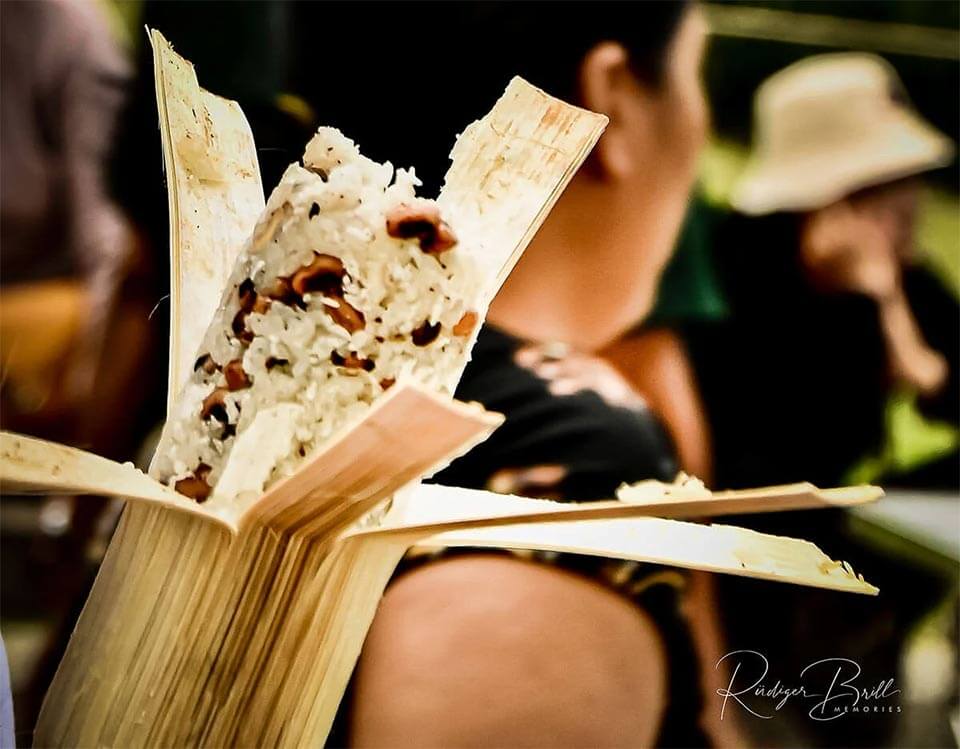
The history of the festival
As early as 1873, a picture of a Cambodian speedboat was published in the French magazine Le Magazin Pittoresque. It is the first written evidence of dragon boat racing in Cambodia.
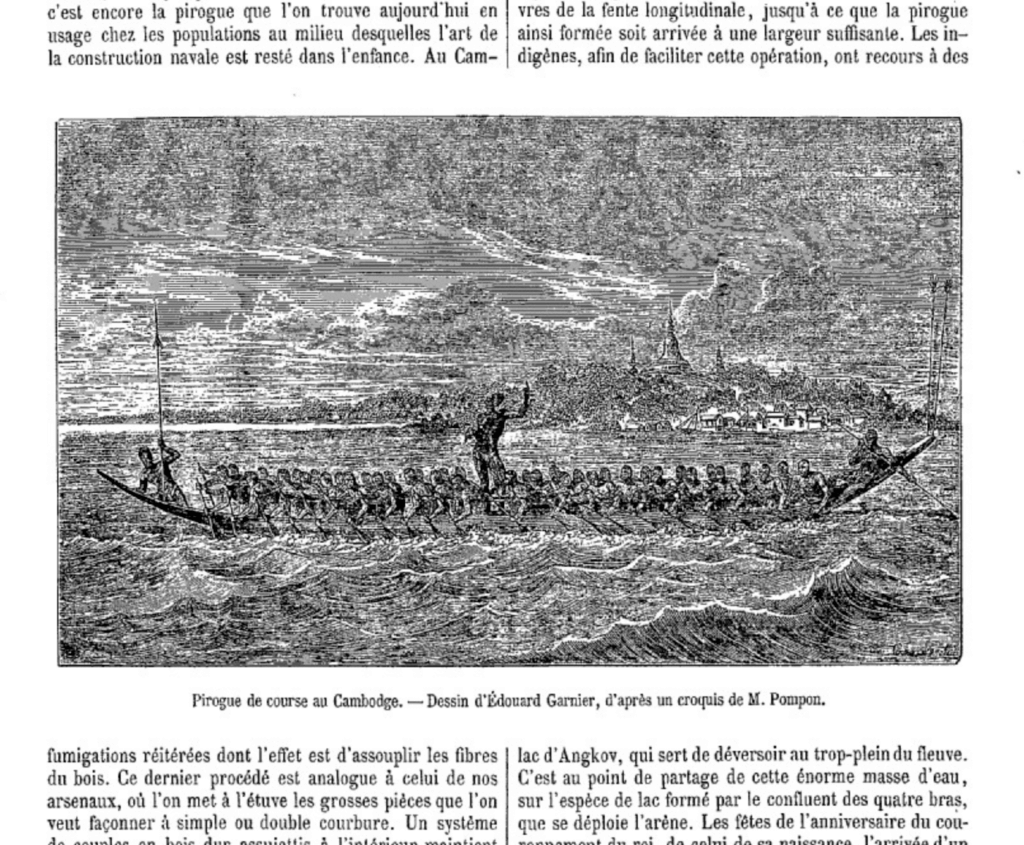
From then on, it was celebrated irregularly for many years. After the Second World War in 1945 and in 1953 after independence from France. Many events repeatedly interrupted the regular holding of the festival. During the Cambodian civil war, it was suspended altogether. It was not until 1993 that the celebration resumed – incidents, natural disasters up to our days and the Covid 19 pandemic in 2020 and 2021 have repeatedly prevented the Water Festival from taking place.
The Royal Water Festival follows a set ritual. Dragon boats from all corners of Cambodia gather in Phnom Penh and compete against each other for three days. In the evening, at sunset, a prayer for peace is said to Preah Mae Kongkea, the Cambodian patron goddess of water, and a candle is lit by the king. The Bandet Bratib, the illuminated boats, represent the various royal services and ministries of Cambodia.
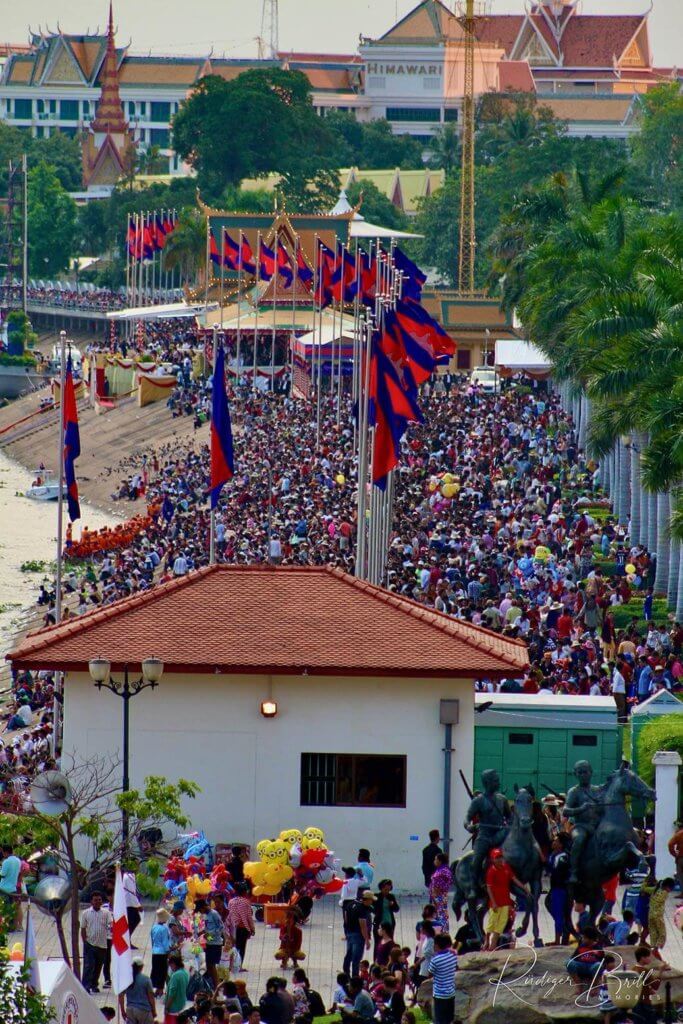
Up to 500,000 people descend on the country’s capital Phnom Penh for the festivities. The Sisowath Quay, widely closed to traffic, crowds throng and populate the riverbank until late at night.
Unfortunately, there are always accidents …
The celebration gained sad notoriety in 2010 when many people died in a mass panic on a newly constructed footbridge over the Bassac Canal, which was too small for the crowds. The bridge connected Phnom Penh with Koh Pich (Diamond Island). It was subsequently demolished. Today, a monument erected later on the west bank of the former bridge commemorates the disaster.
If you are planning to travel to Cambodia in November, you should definitely keep an eye on the water festival. There will be no other opportunity to visit a Cambodian festival of this magnitude so soon!

Affiliate*
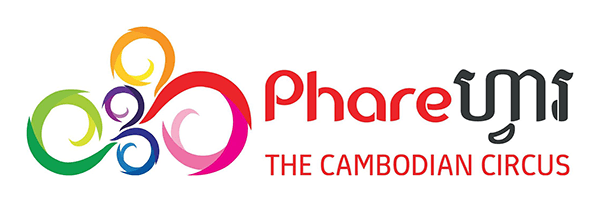
Phare, the Cambodian Circus
A highlight in Siem Reap! Buy tickets online directly on the Circus Phare website*.
Links and references with a * are an affiliate link (advertising link). If you like Visit Angkor and buy, book or subscribe to something via an affiliate link, the provider will make a small commission for Visit Angkor. Of course, there are no additional costs for you.
Join our Facebook group
International travel group with friendly people who love Cambodia. We speak English, German and a little Khmer.
By the way: We write here at Visit Angkor with a lot of passion and love. Nevertheless, it can happen that information is no longer up to date or perhaps even incorrect. We would be happy to hear from you so that we can update the information accordingly. Thank you very much!

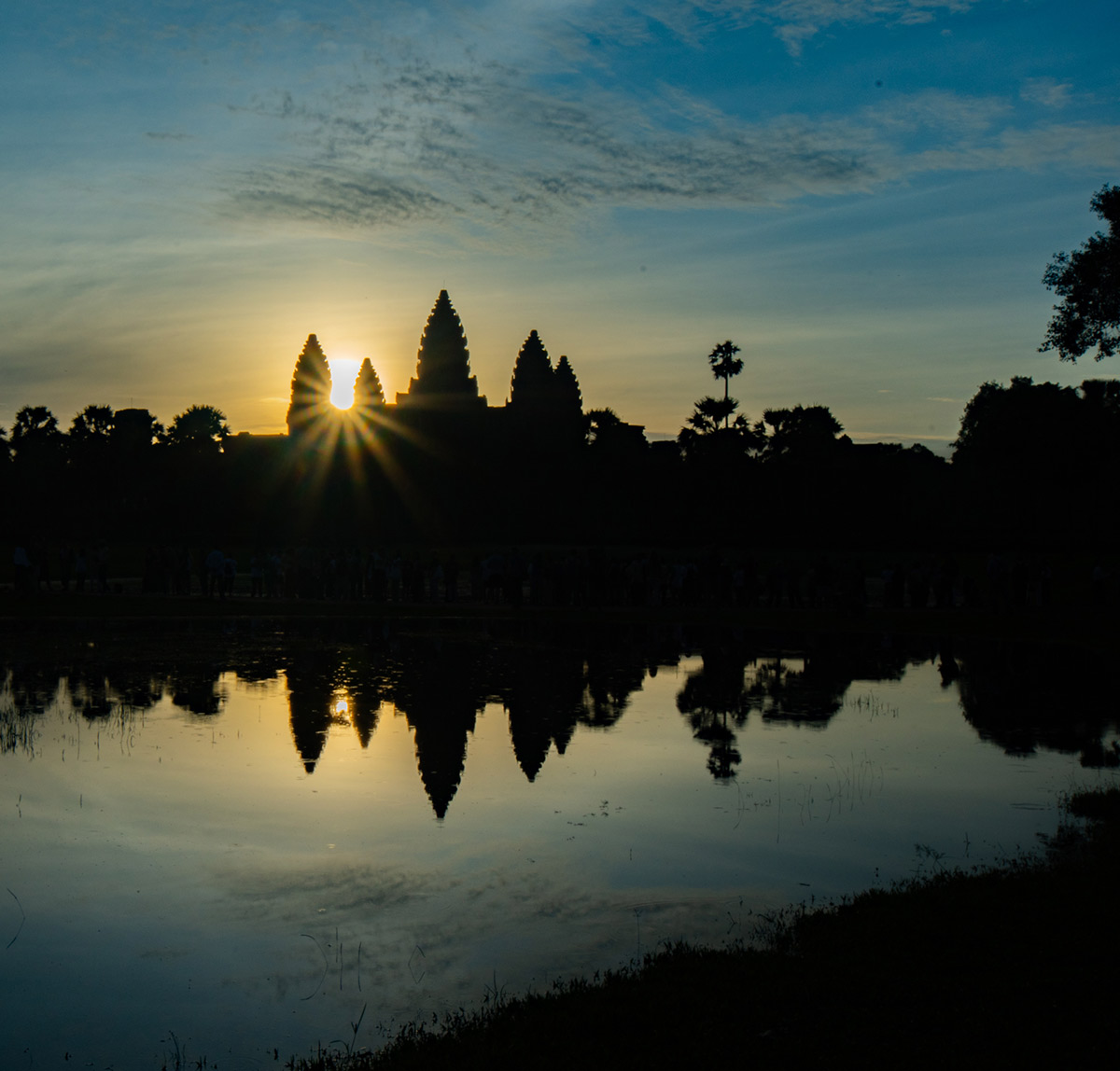

Hey, nice things about Cambodia. What about dvent this year ?
Where, when, what ?
Thanks
Jaime
Hi Jaime,
Water Festival will be from November 7 up to November 9 this year. Unfortunately not in Phnom Penh due to Covid and a another special Event in town. But in provinces like Siem Reap, the Water Festival will take place.
Best :)
Inga
Thanks for your reply.
I would like to know which other event Cambodia has on Independence Day in Phnom Penh and which other events in Siam Reap ? If you have a link with the program much better!
Thanks in advance,
Jaime